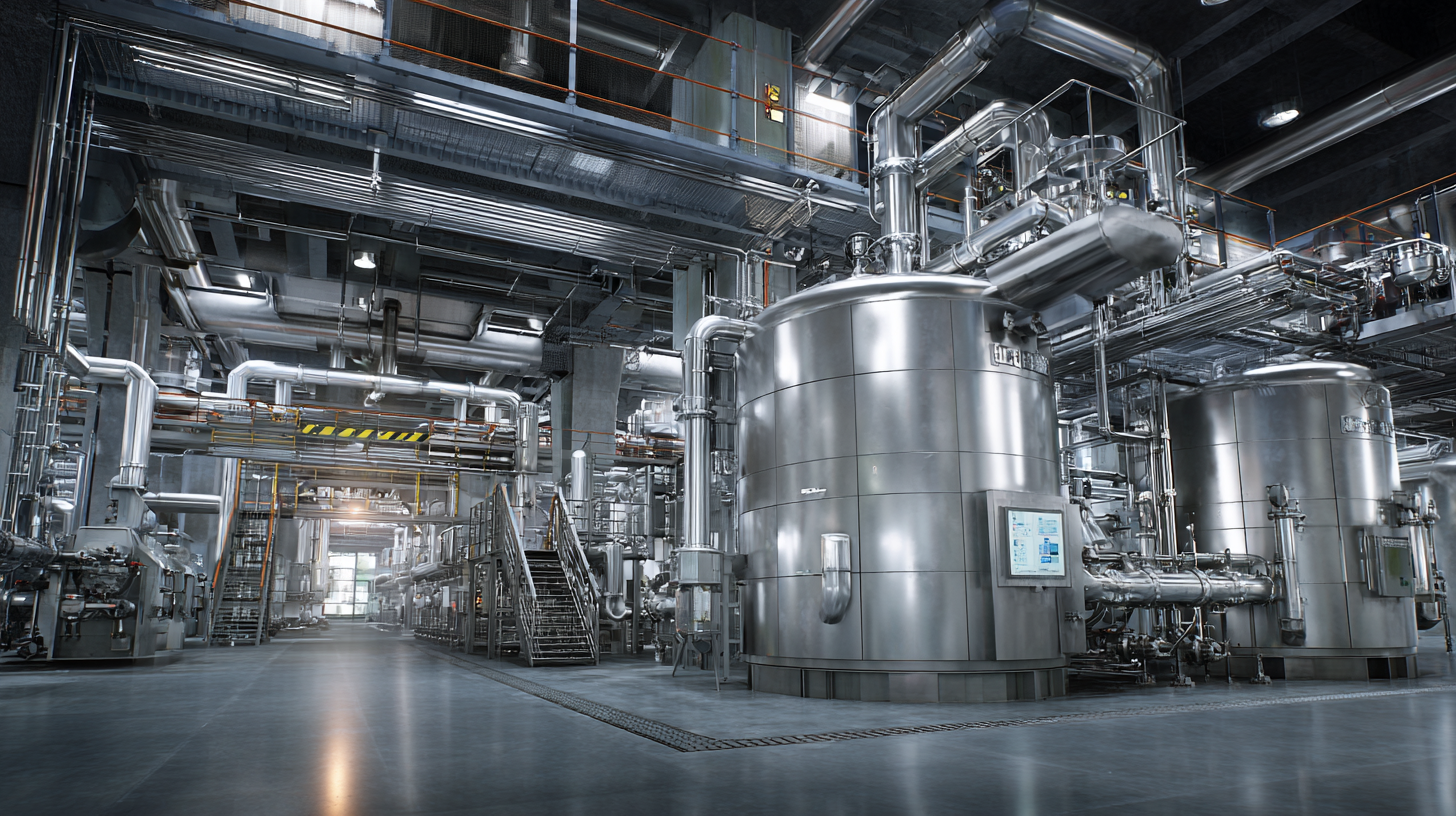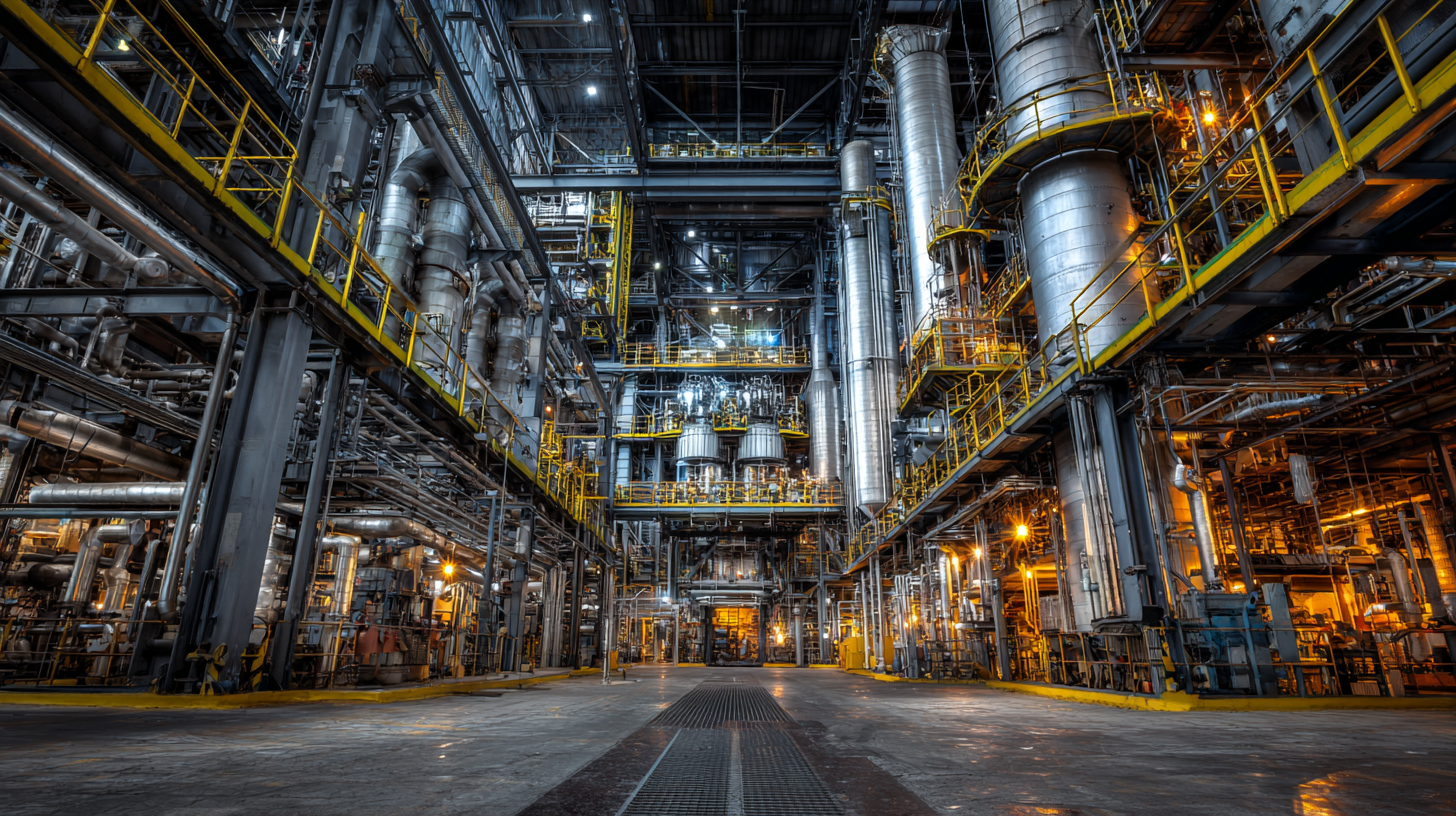In today's highly competitive industrial landscape, optimizing production efficiency is paramount, and advanced process technology plays a critical role in achieving this goal.
 According to a recent report by McKinsey & Company, companies that strategically adopt cutting-edge process technologies can enhance their productivity by up to 30%, significantly reducing operational costs and lead times.
The integration of automation, data analytics, and IoT in manufacturing processes not only streamlines workflows but also empowers organizations to make informed decisions in real-time.
Additionally, a study by the World Economic Forum highlights that businesses leveraging process technology are better positioned to adapt to market fluctuations, thereby improving their resilience and long-term sustainability.
As industries continue to evolve, embracing advanced process technology is no longer optional but essential for ensuring competitiveness and driving growth.
According to a recent report by McKinsey & Company, companies that strategically adopt cutting-edge process technologies can enhance their productivity by up to 30%, significantly reducing operational costs and lead times.
The integration of automation, data analytics, and IoT in manufacturing processes not only streamlines workflows but also empowers organizations to make informed decisions in real-time.
Additionally, a study by the World Economic Forum highlights that businesses leveraging process technology are better positioned to adapt to market fluctuations, thereby improving their resilience and long-term sustainability.
As industries continue to evolve, embracing advanced process technology is no longer optional but essential for ensuring competitiveness and driving growth.
Advanced Process Technology (APT) is a pivotal component in optimizing production efficiency across various industries. By integrating smart technologies that prioritize energy reduction and sustainability, manufacturers can significantly enhance their operational workflows. For instance, employing selective additive manufacturing techniques has been shown to minimize waste, allowing for a carbon footprint reduction of up to 30%. According to recent studies, the adoption of advanced manufacturing processes can lead to a 25% increase in production effectiveness, ensuring that organizations remain competitive in a rapidly evolving market.
Tips for Optimization:
Implementing advanced technologies in production lines offers several key benefits that can significantly enhance efficiency and productivity. According to a recent report by McKinsey & Company, manufacturers that adopt advanced process technologies can increase their productivity by up to 20-30%. This improvement is largely attributed to automation and data analytics, which streamline operations, reduce human errors, and optimize resource allocation. For example, the integration of IoT (Internet of Things) sensors allows for real-time monitoring of equipment performance, enabling predictive maintenance that can reduce downtime by 25%, as cited in a study by Deloitte.
Moreover, advanced production technologies such as artificial intelligence (AI) and machine learning enable manufacturers to make more informed decisions based on data-driven insights. A report from the World Economic Forum highlights that companies leveraging AI in production can decrease operational costs by 10-15%, fostering a more agile and responsive manufacturing environment. As supply chains become increasingly complex, these technologies provide the necessary agility to pivot operations based on market demands, ultimately leading to enhanced competitiveness in the global marketplace.
Identifying bottlenecks in production processes is crucial for enhancing efficiency, and advanced process technology plays a pivotal role in this endeavor. By employing real-time data analytics and process modeling tools, organizations can gain deep insights into their production workflows. These technologies allow managers to visualize each stage of the process, pinpoint delays, and assess where resources are being underutilized. This proactive approach helps in identifying specific areas that lag behind, enabling teams to target interventions that can streamline operations.
Moreover, advanced process technologies facilitate continuous improvement through iterative testing and feedback loops. By integrating automated monitoring systems, businesses can track performance metrics and identify trends that indicate potential bottlenecks before they escalate. For instance, machine learning algorithms can analyze historical data to predict when equipment is likely to fail, allowing preventive maintenance to be scheduled. In this way, advanced process technology not only helps in recognizing current inefficiencies but also empowers organizations to create more resilient and responsive production systems.
Integrating automation into production processes has become essential for businesses aiming to enhance their efficiency and competitiveness. Smart systems, characterized by their ability to analyze data in real time and adjust workflows accordingly, are transforming traditional manufacturing practices. These technologies not only streamline operations but also minimize human error, leading to increased output and consistency in product quality.

Moreover, advanced process technologies facilitate the seamless integration of IoT devices and machine learning algorithms, allowing for predictive maintenance and optimal resource management. By leveraging data from connected machines, companies can anticipate potential failures before they occur, reducing downtime and maintenance costs. This proactive approach supports a more agile production environment, where adjustments can be made swiftly based on demand fluctuations, ultimately enhancing overall productivity and efficiency.
 In recent years, various manufacturing firms have successfully implemented advanced process technologies, showcasing the transformative impact on production efficiency. For instance, a leading automotive manufacturer integrated robotic automation into their assembly line, resulting in a 30% increase in output while significantly reducing human error. This shift not only optimized workflow but also enhanced the overall quality of the vehicles produced, demonstrating the tangible benefits of embracing advanced technology.
In recent years, various manufacturing firms have successfully implemented advanced process technologies, showcasing the transformative impact on production efficiency. For instance, a leading automotive manufacturer integrated robotic automation into their assembly line, resulting in a 30% increase in output while significantly reducing human error. This shift not only optimized workflow but also enhanced the overall quality of the vehicles produced, demonstrating the tangible benefits of embracing advanced technology.
When considering upgrading processes, companies can benefit from studying successful case studies. Tip: Analyze your specific production needs and identify which processes could be streamlined by technology. Another example includes a food processing company that adopted IoT (Internet of Things) devices to monitor equipment performance in real-time. This proactive approach allowed them to preemptively address maintenance issues, reducing downtime by 25%.
Tip: Collaborate with technology vendors to tailor solutions that meet your operational goals. Embracing such advancements not only drives efficiency but can also place companies at the forefront of innovation in their respective industries.






„Thanks to the LUVIR technology, the solder resist process could be switched directly from the previously used mask exposure to direct exposure. As an outstanding digital solution on the market, this technology has been able to demonstrate fast process times and superior quality on our certified conventional ink in production. This allowed us to fully digitize the solder mask process at low cost – without process or ink adjustments. An excellent benefit to our production in Rot am See.“
Ralf Göhringer (Head of Production WE Rot am See)
I would definitely recommend the Limata machine and team for a future company purchase
Michael Greenaway
Compunetics Inc.
“The Limata ldi has been amazing!! Best thing we did was buy this machine”
Richard Brady
GM
Circuitlabs
“Since 2019, we have been running the Limata X1000 LDI system (including LUVIR for solder mask imaging) in daily production as an addition to our current process with film. The machine was capable of properly exposing Taiyo PSR-4000 BN (DI) solder mask types on normal to high-copper boards using a new and unique direct imaging process. The machine operating interface is very user friendly which allowed for a quick technical training curve. The pre-registration processing reduced several seconds of production time at every print. Limata support and service staff is incomparable. They supported our team every step of the way at basically any time of the day or night, with literally, an immediate response time, customizing the software interface to best fit our Operations and needs.
We have exposed more than 8,000 prints since end of October, on various solder mask colors and some resist film panels. Limata, has proven to be very capable and innovative. They are a strong contender in the industry.
We have very much enjoyed this project, and working with the team!
Thank you Limata for the continued support and being a part of our growth.”
Bill Sezate
Vice President, GM
Summit Interconnect
As a replacement to our current contact exposure process with film, the LIMATA X2000 system including LUVIR-Technology was capable of properly exposing non-LDI solder mask types using a direct imaging process. The machine offers cutting edge software with a very intuitive operating interface which allowed for quick technician training curve. The dual drawer system combined with pre-registration processing reduced several seconds of production time at every machine cycle. Limata support and service staff is world class. They added software patches to keep production running at shortest possible response times, customized the software interface to best fit our in-house Operations system, and even wrote a step-by-step machine processing manual. As a result of the project, we have exposed more than 16,000 times on various product types and solder mask brands/colors. Limata, in a very short timeframe as a company, has definitely shown they are truly innovative and will be challenging the industry of direct imaging for the top spot.
Kevin Beattie
Process Engineer
TTM Technologies
Forest Grove Division